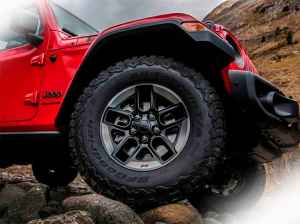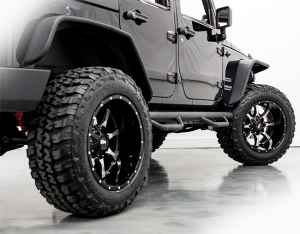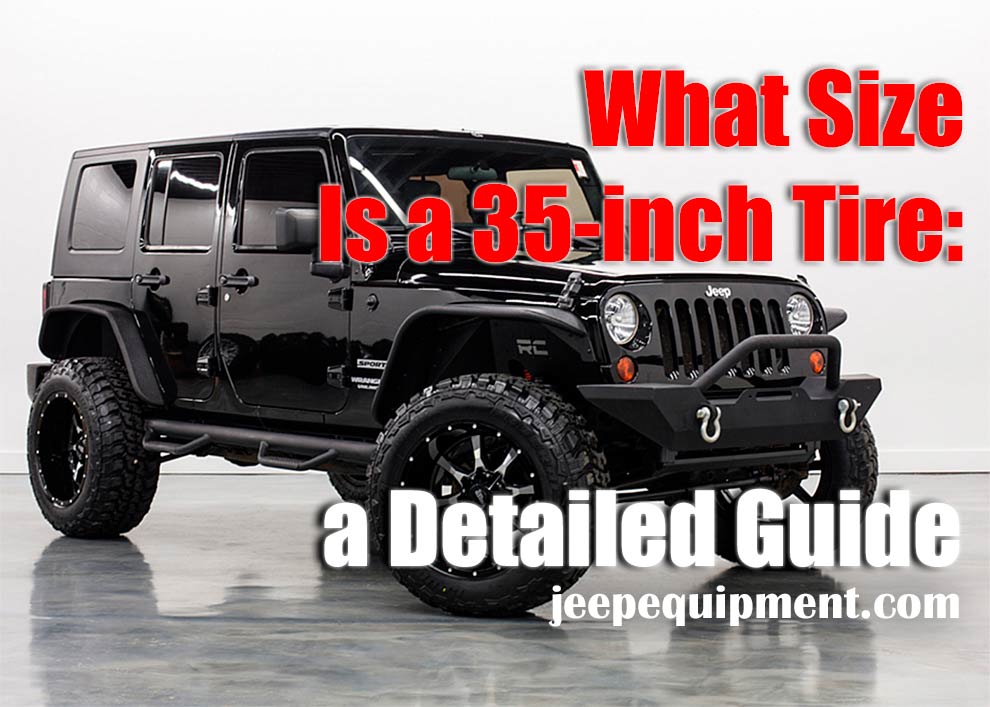If you own a mean off-roading beast like the Wrangler, I bet you’re already thinking about upgrading to bigger tires. First of all, they’ll look like a million bucks. Secondly, they will greatly improve your Jeep’s performance over bumps, steep climbs, rocky terrain, and more. Now, most experts recommend getting a 35-inch set. They have proven to be extremely capable over challenging trails.
However, there’s a catch: when it comes to tire sizes, the measurements aren’t always exact. That’s right: what you see at a local shop/online store in the specs doesn’t always mean you’ll get exactly that. Most likely, the size will be slightly smaller. So, how do you figure this out? What size are 35 inch tires, actually? Join me, and let’s get to the bottom of this!
Advertised vs. Actual Tire Size

Say, for off-roading trucks and SUVs, 20-40 PSI is the golden middle. For the legendary Jeep Wrangler, 29 PSI for the front tires has proven to be the most effective setting. For the rear tires, go with 38 PSI – you won’t regret it. And now you see exactly why the tire size on paper almost never matches that in real life. Thus, if you bought a set of 35” tires, they’ll be somewhere between 33.5- and 34.5-inches.
For regular drivers, this isn’t a very big deal, of course. On the other hand, professional drivers should always keep this in mind to get the best results in competitive racing.
The Right Way to Measure Tires for the Wrangler

This one’s a bit complicated. Say, if you’ve got something like 215/65 in the specs, that means the height of the tire equals 65% of its width. And finally, we’ve got the diameter – the size of the tire. In simple terms, it “tells” you the wheel size/diameter that the tires will fit. So, a 215/65/15 measurement on the sidewall means the tires will be perfectly compatible with a 15-inch wheel.
Figuring out the Exact Tire Size
There are lots of free online calculators that you can use. Simply type in the width, aspect ratio, and diameter, and you’ll see exactly how large the tire is in inches. However, even after you get the most accurate size, you still gotta consider what we discussed earlier. I’m talking about maximum and average PSI that people tend to use.
And remember: for a 35-inch tire, the width will, most likely, be somewhere in the 315-320 range. The ratio, in turn, will “hang” between 65 and 75 percent. With this info, it will be much easier to roughly measure tires at an auto shop off the top of your head. Or, better yet, launch that online tire calculator on your phone and see what’s what. I bet if the specs claim it’s a 35” set, when you check those three parameters, you’ll find that it’s 33-34”, not 35”.
What’s the Deal with the Numbers?
Is there a “P” sitting right before the numbers? That’s a US standard and indicates the tire is intended for Passenger cars. If there are no letters, that automatically means the tire was designed and crafted according to European standards. LT translates as “Light Truck”. And what about the “R” after the aspect ratio, you might ask? It stands for Radial and describes how the layers run (not very important for the average driver).
The “H” is a speed rating set by the tire manufacturer. With most brands, it means you’re not recommended to go over 130MPH/210KM/H. These aren’t strict requirements, but it would still be wise to check whether there’s an H rating on the tires, or not. Finally, the “DOT” indicates that the tires comply with all the safety standards in the US.
To further enhance your vehicle’s readiness for rugged terrain, delve into options for the best off road Jeep spare tire carriers. Securing a reliable spare tire carrier is crucial for any off-road enthusiast, ensuring that you’re always prepared with a spare that’s easily accessible, no matter where your adventures take you.
Bottom Line
So, to answer the question what size is a 35-inch tire, you should remember that it will be slightly smaller than 35”. If you see specs like 315/75/15 or 315/70/17, a calculator will give you the accurate size. And keep in mind that the advertised value isn’t exact and may differ from reality – especially when it comes to off-roaders because of low tire pressure. The important thing is to know your specific vehicle’s measurements and check for any additional safety ratings before purchasing a tire of this size.

Add Comment